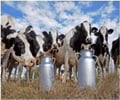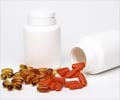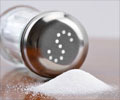- A review of the alleged health hazards of monosodium glutamate. - (https://www.ncbi.nlm.nih.gov/pmc/articles/PMC6952072/ )
- New composite nitrite-free and low-nitrite meat-curing systems using natural colorants. - (https://www.ncbi.nlm.nih.gov/pmc/articles/PMC3967773/)
- Cyclamates. - (https://www.ncbi.nlm.nih.gov/books/NBK402042/)
Food Additive Health Hazards
There exists an apprehension, among the general public, regarding the food additives and their effects on health.
The use of these products is stringently monitored by several international bodies.
They are approved for usage only after thorough testing to ensure their safety for human consumption. They are then conferred the 'Generally regarded as safe' (GRAS) status.
Ajinomoto came under question in 1969 when on injection, brain damage was reported in young mice. It was immediately discontinued in baby foods. Its use was permitted again in 1970, since a small amount was being used in baby food. A permissible level is set for human consumption and there are no reported risks if the amount of any additive consumed is within that limit(6✔ ✔Trusted Source
A review of the alleged health hazards of monosodium glutamate.
Go to source).
Nitrite - a meat- curing agent, was found to react with amino acid in the intestine to produce nitrosoamine, a cancer-inducing agent. However since nitrites are also present other foods, FDA have permitted the use of small amount of these compounds as an additive(7✔ ✔Trusted Source
New composite nitrite-free and low-nitrite meat-curing systems using natural colorants.
Go to source).
Cyclamates - an artificial sweetener was granted the GRAS status in 1958. However the status was removed in 1969 since rats fed on cyclamates were known to develop bladder tumors(8✔ ✔Trusted Source
Cyclamates.
Go to source).
Natural additives are not superior to artificial ones. In fact, the artificial additives generate a greater level of purity and consistency in comparison to the artificial ones. The presence of additives is usually mentioned in the ingredient column of the food packet.















